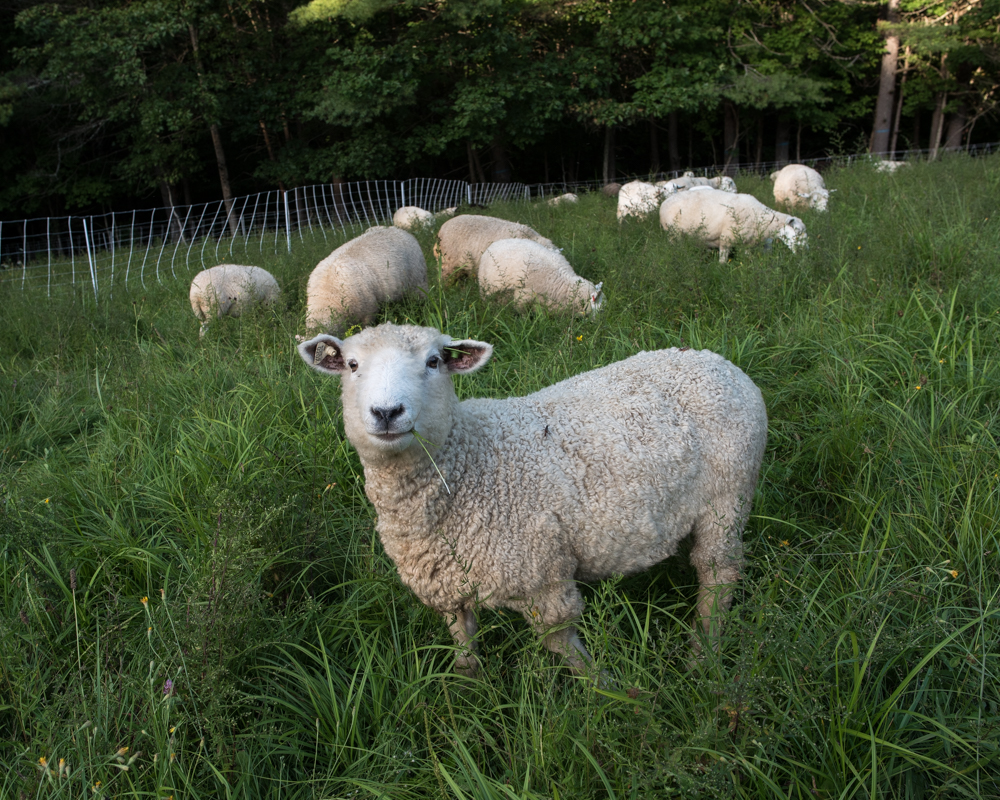When I weighed the flock after their off-farm grazing tour, I was disappointed with what seemed like poor performance, but at that point I hadn’t looked carefully enough at the numbers to really understand where things stood. I finally got to spend some quality time with my spreadsheets this morning, and though I’m still figuring out how my flock should perform under ideal circumstances, I think I have a better sense of what the weight data have to say. In order to draw meaningful conclusions, I divided the flock into six groups based on their metabolic circumstances.
- The stars of the flock were the May-born lambs. As a group, they gained more than a third of a pound per day, a very respectable amount. This is exactly what I should be seeing, as these lambs were getting the majority of their calories from nursing, while their grazing was a small nutritional supplement; they’re also at the age (2-3 months old) when they grow most rapidly. In theory, these lambs should gain weight even if they were grazing on the moon, as long as their mothers got enough food to maintain their milk supply.
- And as expected, the mothers of the May lambs lost ground over the 38 days they were off the farm, losing about a quarter of a pound per day. These ewes, especially the ones with more than one lamb, are under enormous metabolic strain from lactation. I would have been very surprised if this group had gained weight, but I’m not sure if the extent of their weight loss is inevitable, or if they would have done better with more to eat.
- The group of February-born lambs particularly caught my attention as I was weighing the flock. Their estimated average daily weight gain from birth was almost 0.6lb, but during the off-site period, that slowed to .05lb per day. As lambs get older, their weight gain always slows, but the extent of the stall disappointed me.
- The mothers of the February lambs were no longer supplying the majority of their lambs’ calories from milk, but they still lost a tenth of a pound per day.
- Adult ewes that didn’t have lambs, either because they didn’t get pregnant or because their lambs died, didn’t have any extra metabolic demands from lactation, but wouldn’t necessarily be expected to gain much weight if they had already reached their adult size. This group’s weight was essentially unchanged over the 38 days.
- I would have expected the last group, yearling ewes without lambs, to have gained some weight, as they’re still growing into their adult bodies, but this group was also essentially unchanged.
Since the flock has been back on my fields, I’ve been trying hard to give them everything they need — grazing them on excellent pasture, and moving them twice a day, well before they’ve exhausted the forage in their grazing section.

I plan to weigh them again on the 26th, about 3 weeks after they got back here, and I imagine those numbers will be quite instructive. If the sheep more or less continue the trends of the previous 5 weeks, I’d conclude that the off-farm pasture was not limiting them, and if I want more weight gain, I need to breed sheep that are more genetically disposed to efficient use of forage. If instead I see that they’ve done much better since getting back home, I’ll have to conclude that the off-farm pasture was limiting their growth, and I’ll have to figure out how to improve their pasture access next year. To be continued!
Tagged: analysis, data mining, forage quality, geeking out, lambs, pasture, pasture quality, sheep, spreadsheets, weight gain